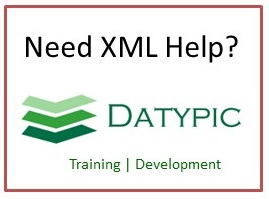OriginalApplicationArea
A copy of the ApplicationArea for the original BOD that was processed. Present either as additional reference information, or for use in identifying the BOD in situations where a BODReference is not known.
Element information
Namespace: http://www.openapplications.org/oagis/10
Schema document: Common.xsd
Type: ApplicationAreaType
Properties: Global, Qualified, ID: oagis-id-ca436b3bd0d44c6cb0fa1114c350b0cb
Content
- Sequence [1..1]
- Sender [0..1] Identifies characteristics and control identifiers that relate to the application that created the Business Object Document. The sender area can indicate the logical location of the application and/or database server, the application, and the task that was processing to create the BOD.
- Receiver [0..*] Identifies the intended receiver of the given BOD instance.
- CreationDateTime [1..1] is the date time stamp that the given instance of the Business Object Document was created. This date must not be modified during the life of the Business Object Document.
- Signature [0..1] If the BOD is to be signed the signature element is included, otherwise it is not. Signature supports any digital signature that maybe used by an implementation of OAGIS. The qualifyingAgency identifies the agency that provided the format for the signature. This element supports any digital signature specification that is available today and in the future. This is accomplished by not actually defining the content but by allowing the implementation to specify the digital signature to be used via an external XML Schema namespace declaration. The Signature element is defined to have any content from any other namespace. This allows the user to carry a digital signature in the xml instance of a BOD. The choice of which digital signature to use is left up to the user and their integration needs.
- ScenarioID [0..1]
- CorrelationID [0..1]
- BODID [0..1] The BODId provides a place to carry a Globally Unique Identifier (GUID) that will make each Business Object Document instance uniquely identifiable. This is a critical success factor to enable software developers to use the Globally Unique Identifier (GUID) to build the following services or capabilities: 1. Legally binding transactions, 2. Transaction logging, 3. Exception handling, 4. Re-sending, 5. Reporting, 6. Confirmations, 7. Security.
- Extension [0..1] Allows the user of OAGIS to extend the specification in order to provide additional information that is not captured in OAGIS.This is done by defining the additional information in XML Schema and referencing the new schema in the xml instance document through the use of namespaces. Once this is done the additional information defined there can be carried in the BOD XML instance document.The Open Applications Group will make best efforts to quickly consider all proposed submissions.The Extension is always the last element in all components, except where the component has been extended inline.
from type ApplicationAreaBaseType
Attributes
None
Used in
- Type AcknowledgeType via extension of ResponseVerbType (Elements Acknowledge, CancelAcknowledge, ChangeAcknowledge, PostAcknowledge)
- Type ConfirmType (Element Confirm)
- Type RespondType via extension of ResponseVerbType (Elements LoadResponse, SyncResponse)
- Type ResponseVerbType
- Type ShowType via extension of ResponseVerbType (Element Show)
Sample instance
<OriginalApplicationArea> <Sender> <LogicalID>normalizedString</LogicalID> <ComponentID>normalizedString</ComponentID> <TaskID>normalizedString</TaskID> <ReferenceID>normalizedString</ReferenceID> <ConfirmationCodes> <ProcessingConfirmationCode>normalizedString</ProcessingConfirmationCode> <ConfirmationCode>token</ConfirmationCode> </ConfirmationCodes> <AuthorizationID>normalizedString</AuthorizationID> </Sender> <Receiver> <LogicalID>normalizedString</LogicalID> <ComponentID>normalizedString</ComponentID> <ID/> </Receiver> <CreationDateTime></CreationDateTime> <Signature> <!--any element--> </Signature> <ScenarioID>normalizedString</ScenarioID> <CorrelationID>normalizedString</CorrelationID> <BODID>normalizedString</BODID> <Extension> <AnyExtension> <!--any element--> </AnyExtension> <Amount/> <Code/> <DateTime></DateTime> <ID/> <Indicator>true</Indicator> <Measure/> <Name/> <Number>1.0</Number> <Quantity/> <Text/> <Time></Time> <ValueText>string</ValueText> </Extension> </OriginalApplicationArea>



